Wild turkey reintroductions have been spectacularly successful in restoring the species. But these programs have also been successful in mixing up turkey genetics.
Today, determining turkey subspecies requires the skills of a wildlife CSI team.
To understand why, let’s take a look at the history of turkey restoration and how it has shuffled the deck for turkey taxonomy.
Recovery and Expansion
Wildlife managers have released more than 200,000 wild turkeys in North America since the 1950’s to help recover populations that were decimated by overhunting.
In addition to increasing populations, these efforts also expanded the range of wild turkeys. The turkey’s native range covers 39 states, including all of the eastern United States and extending southwest through Texas, Colorado, New Mexico and Arizona.
Ten additional states where wild turkeys weren’t historically native now have introduced turkey populations (The only state that remains turkey-free is Alaska.)
From Asian carp to kudzu, introduced species can have harmful unintended consequences. With that in mind, today we might take a harder look at turning gobblers loose in Hawaii and nine other western states (along with New Zealand and parts of Europe).
The truth is, we’ve been lucky, and it appears there aren’t any dramatic unintended consequences resulting from having turkeys in new places.
But one subtle consequence of moving all these turkeys around the country is that we’ve reshuffled the genetic makeup of populations.
Five (Taxonomic) Flavors of Wild Turkey
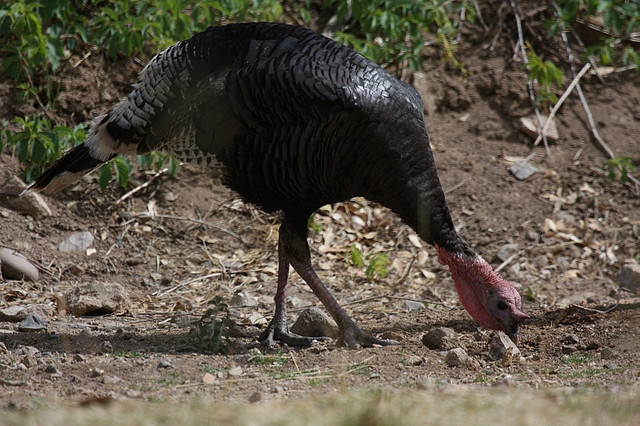
Across the historic range of wild turkeys, there are five geographically and genetically distinct subspecies: Eastern, Osceola, Rio Grande, Merriam’s and Gould’s.
They aren’t always easy to tell apart, but there are differences in size, feather markings and behavior that help distinguish them.
The Eastern wild turkey takes greatest amount of the range, occupying most of the northeast, southeast and Midwestern states. This is the one the pilgrims had for Thanksgiving dinner.
The Florida peninsula has its own subspecies, known as the Osceola, a smaller and darker version of the eastern living in Florida’s piney flatwoods.
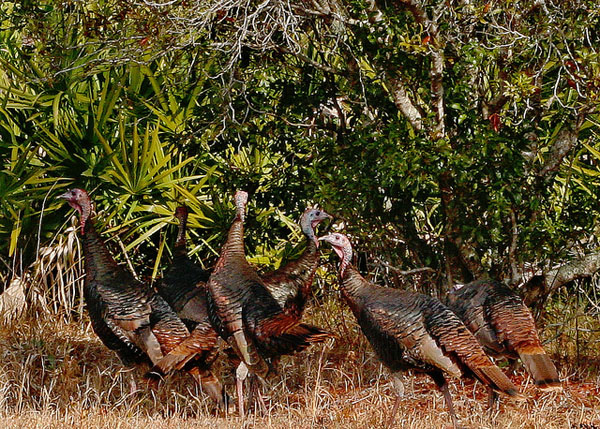
The three additional subspecies are all huddled into the southwestern part of the turkey’s range. These southwestern subspecies are distinguished from their eastern relatives by buff or whitish upper tail feathers.
The Rio Grande turkey is in parts of Kansas, Oklahoma and west Texas, extending south into Mexico while the Merriam’s turkey is a bird of sky island forests of New Mexico, Colorado and Arizona.
The Gould’s barely makes it across the U.S. border in southeast Arizona, ranging south along the spine of the western Sierra Madre in Mexico.
This neat geographic arrangement of subspecies became less so during the wildlife management revolution that brought turkey populations to their current thriving levels.
A Curious Mix of Subspecies and Hybrids
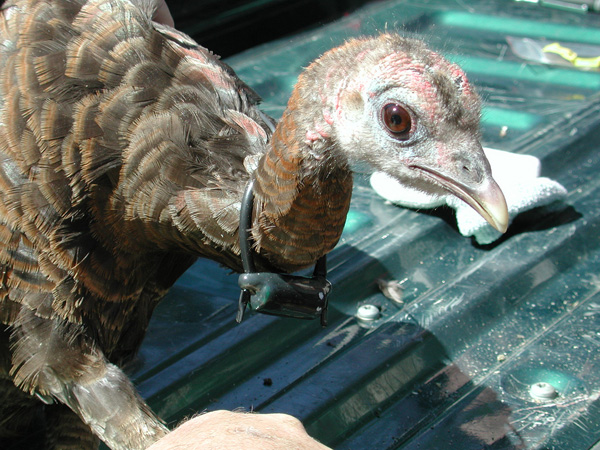
In the early days of restoration, wild turkeys were captured from any place they were still plentiful and released elsewhere to restore populations. Out of necessity, there wasn’t much regard for the subspecies of turkeys coming and going from place to place.
As a result, recent genetic research has shown that certain regions now have a curious mix of subspecies and hybrids.
Because many reintroductions were often not well documented, geneticists have sometimes needed to conduct wildlife management CSI to discover where releases happened and which subspecies were involved.
They’ve been able to document release events that happened decades ago by examining the genetic legacy that today’s wild turkeys carry with them.
In study of Kansas turkeys, geneticists discovered a complex picture. Three different subspecies exist in pure and hybrid forms, with, for example, a lonely island of stocked eastern subspecies turkeys surrounded by a sea of previously stocked Rio Grande birds.
This was an an introduction no one knew about until the genetic results were revealed.
Furthermore they discovered that Merriam’s turkeys were immigrating into the southwest corner of the state all on their own.
These introduced Kansas populations, once established, were then drawn upon to sustain later turkey releases in western states. This is known as “serial translocation” and can propagate genetic messiness down the line.
The next release site, say in California, got turkeys representing a smaller gene pool with an unknown mix of subspecies.
The most useful aspect of “turkey reintroduction CSI” is informing current reintroduction and management efforts.
Sorting the Genetic Legacy of Past Reintroductions
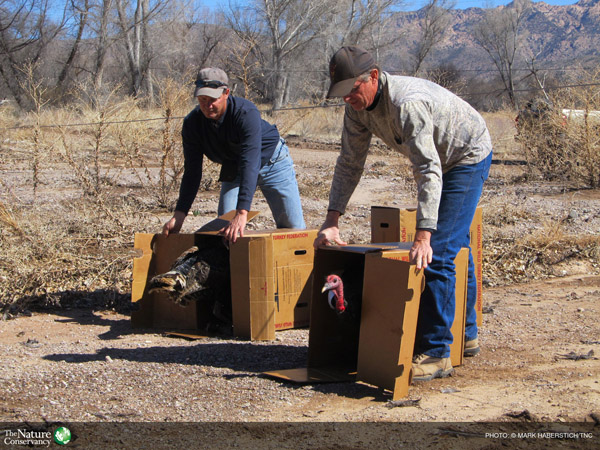
Both wildlife managers and their prime constituent, turkey hunters, want to make sure these distinct subspecies persist and aren’t blended beyond recognition.
Managers want to preserve the genetic diversity that has allowed wild turkeys to thrive in a broad range of environments. Hunters want a diversity of turkeys because it makes hunting more interesting.
One of the bucket list items of many a turkey hunter is getting a “grand slam” – a successful hunt for each of the five wild turkey subspecies.
An official “grand slam” program is run by the National Wild Turkey Federation, an organization also heavily involved in turkey conservation and reintroductions. The organization’s range map shows just how confusing sorting turkey subspecies can be.
For conservationists, a more important reason to sort out the genetic legacy of past reintroductions is to understand how to improve restoration outcomes. Although most turkey releases have been successful, east Texas is one region where wild turkey populations are not quite thriving.
Over 27 years, 7,000 turkeys from 16 different states were released in east Texas.
Despite these efforts, large areas of suitable habitat remain unoccupied by turkeys. Genetic research demonstrated that eastern wild turkeys retaining the midwestern and southeastern genetic signatures of their origin exist in three distinct populations that weren’t intermixing and weren’t dispersing to fill in unoccupied habitat.
These findings led to a series of recommendations for improving turkey management in the region, including managing these three populations as discrete units and ramping up the number of turkeys released during future introductions.
All this turkey lore tells us we have two things to be thankful for.
First, restoration has provided us thriving turkey populations from coast to coast. And second, despite some fast and loose turkey swapping during earlier days of reintroduction, we’ve still got five fascinating subspecies of turkeys roaming the land.
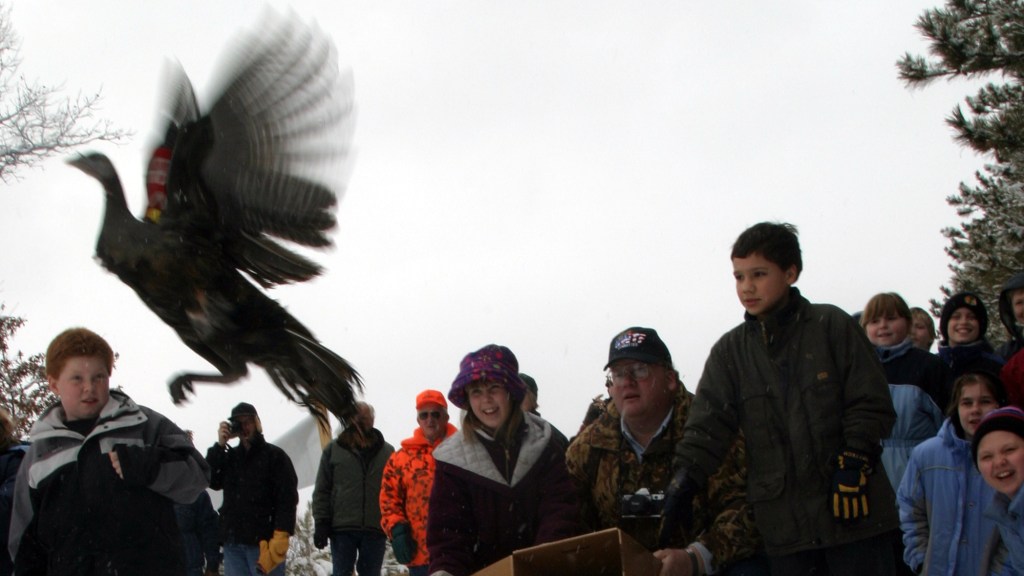



I dispute your claim that the only state remaining free of wild turkeys is Alaska. In 2006 in the small town of Seldovia I was literally attacked from behind by a male wild turkey. It was accompanied by a small flock of four or five (I don’t recall exact number) of other turkeys.
Larry Morrison
O’Fallon, IL
Turkeys are not native to coastal California, and their introduction by the state violated the state’s own laws. Turkeys forage by raking through leaf litter and surface soil, eating anything they expose. Small snakes, lizards and salamanders that occupy leaf litter are heavily affected, as are larger lizards and snakes flushed by foraging turkeys. Turkeys also consume bulbs and corms of native plants. They don’t belong here and need to be shot at every opportunity.